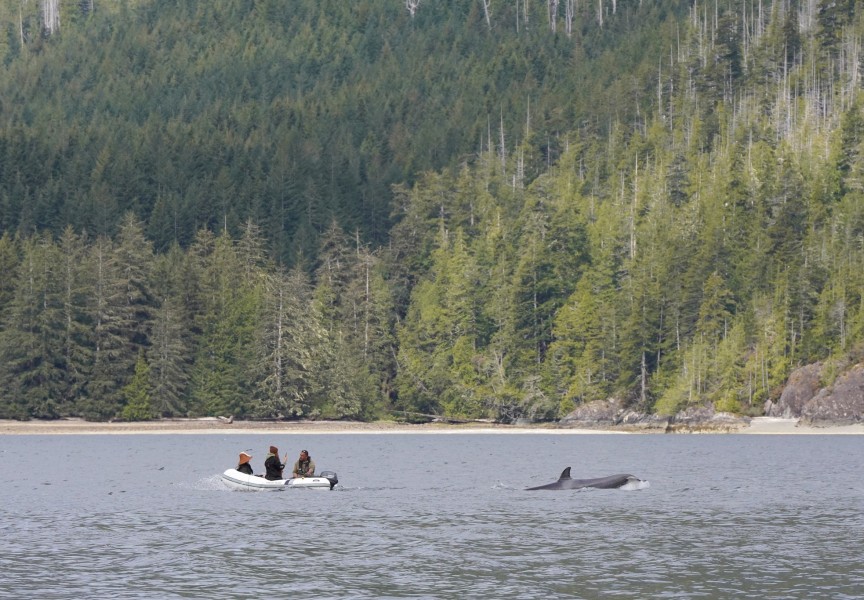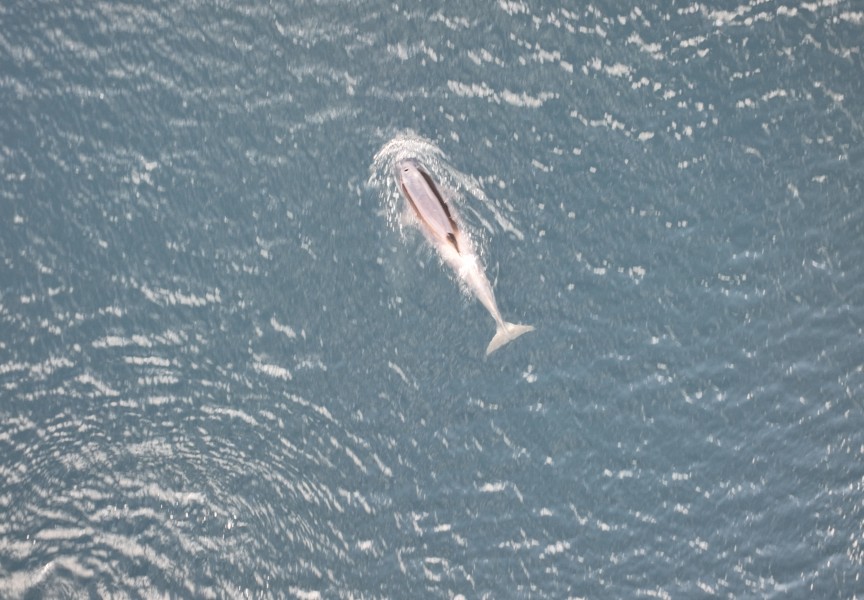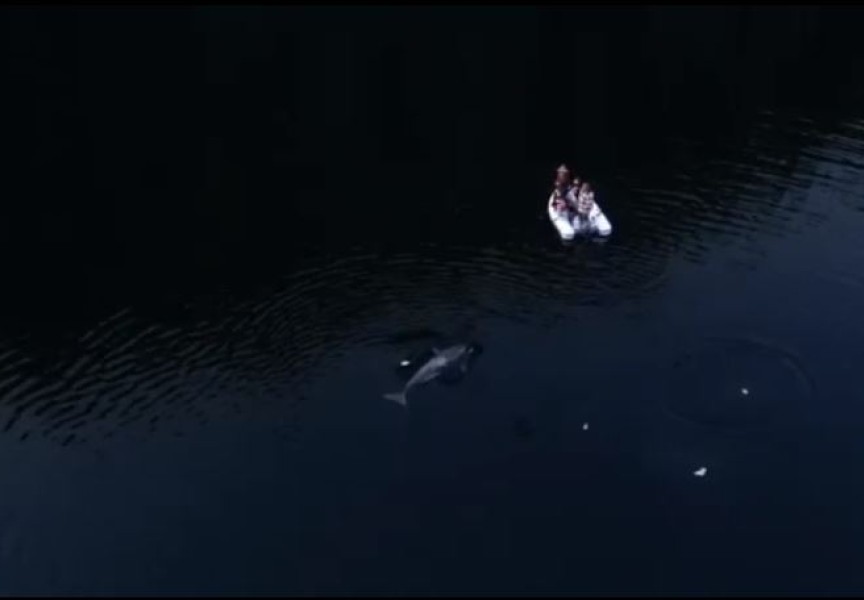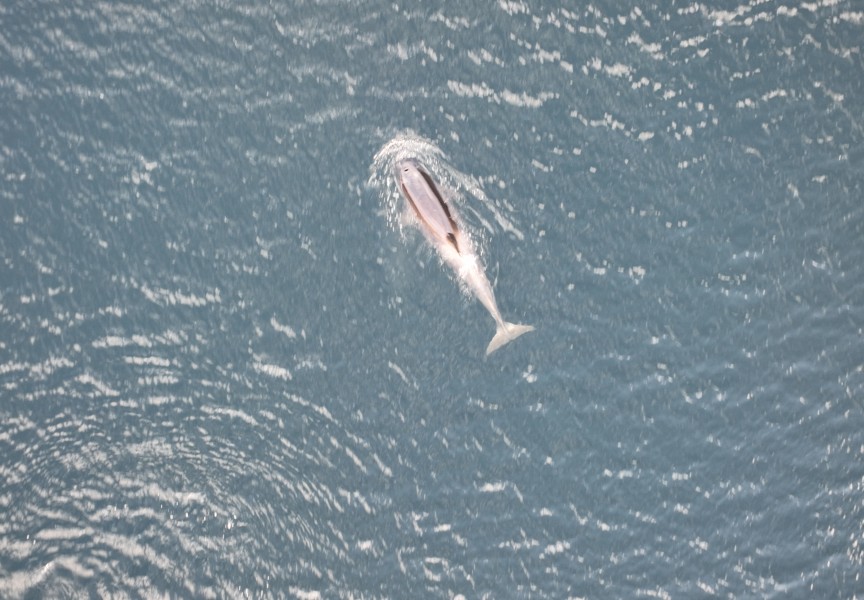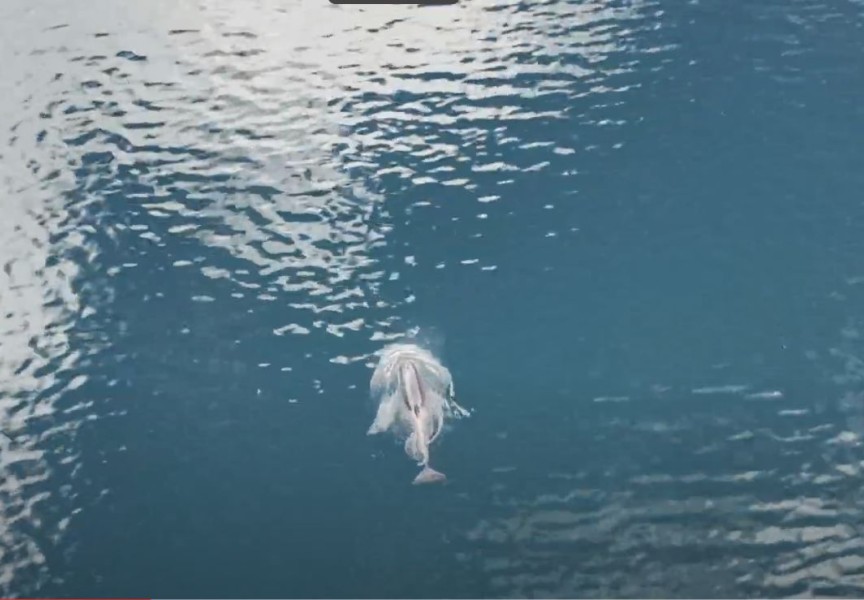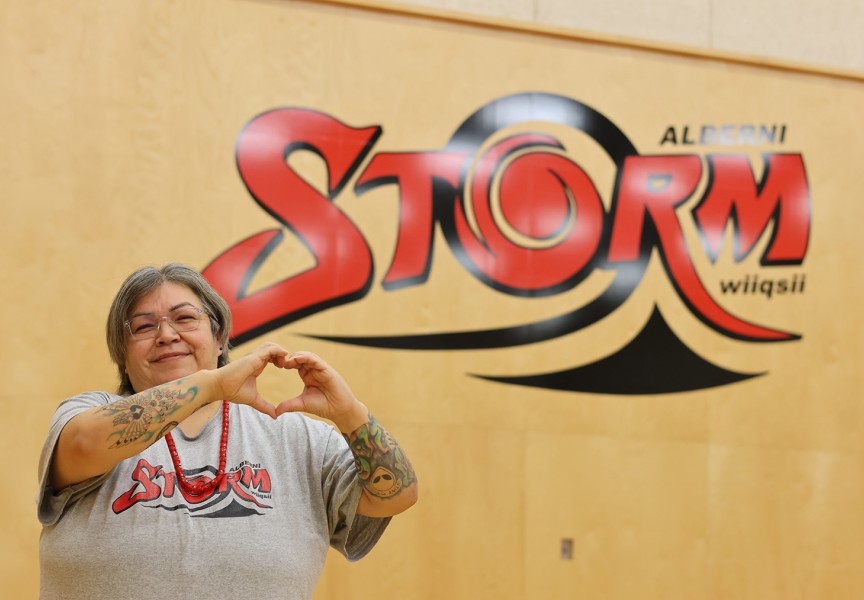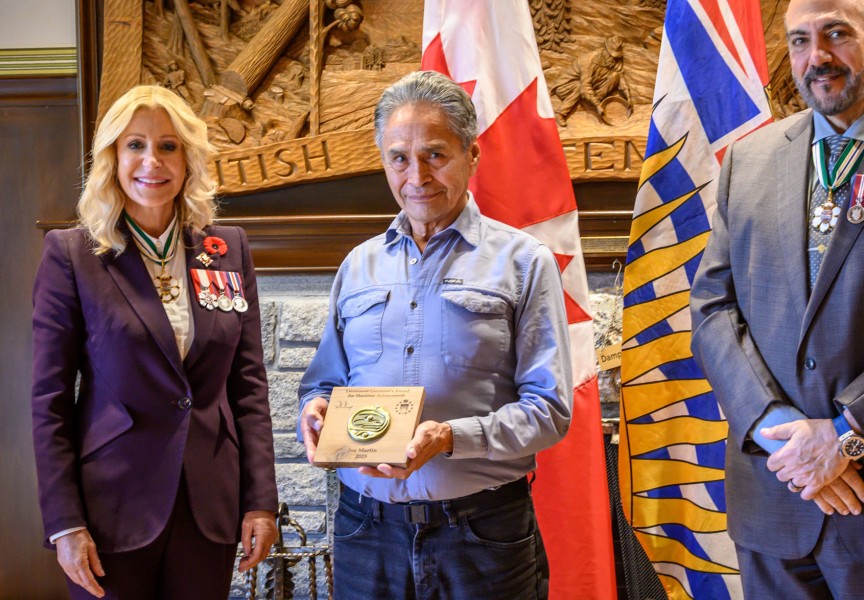The orphaned killer whale calf that made her way out of a lagoon near Ehattesaht in April 2024 is being celebrated through art.
It was in late March when a Biggs Killer Whale and her two-year-old calf entered a shallow lagoon near Ehattesaht when the mother became stranded on a sandbar as the tide receded. Despite community efforts to save her, the mother drowned, her female calf lingered nearby.
For about three weeks DFO officials, in consultation with Ehattesaht First Nation worked on plans to capture and move the juvenile whale, named kʷiisaḥiʔis (Brave little hunter) by the Ehattesaht. The plan was to lure her into a sling, lift her from the lagoon and onto a vehicle where she would be transported to safer waters to be reunited with her pod.
But kʷiisaḥiʔis evaded capture and, on April 26, delighted the world when she made her own way out of the narrow neck of the lagoon under cover of darkness.
Hesquiaht elder and artist, Tim Paul, has strong family ties to Ehattesaht and he was inspired by the resiliency and intelligence of the orca calf.
“What can we learn from the young female killer whale?” Paul asked. He recalled Luna, named tsux’iit by the Mowachaht/Muchalaht. Tsux’iit was a six-year-old male southern resident orca that mysteriously wound up, alone, in Nootka Sound in 2001.
While this whale wasn’t fed by humans, he did become habituated to boats and people. Highly social animals, killer whales thrive in pods. But without his pod, it seemed Luna viewed boats as playmates and would rub up to the sides of boats or play in their wake. Often people would lean over and pet Luna.
Like the case of kʷiisaḥiʔis, federal fisheries officials believed that tsu’xiits’ habituation to boats and people was not healthy and there was a push to capture the whale and move him toward Juan de Fuca Strait where he would have a chance to reunite with his pod.
But tragedy struck March 10, 2006, when tsux’iit was fatally injured by the propeller of a barge in Nootka Sound.
In 2018, Tahlequa (J-5), a southern resident killer whale, lost her calf shortly after giving birth. She drew international attention after carrying her dead calf 1,000 miles over 17 days, apparently mourning her loss. Two years later, Tahlequa bore another calf in September 2020 that survived.
“Luna stayed because he was being touched and petted. What have we learned?” Paul asked. He said we should have left kʷiisaḥiʔis alone to grieve rather than chase her around the lagoon. “We need to leave her alone, let her make her own way out,” said Paul.
Paul said that he spoke with an Ehattesaht relative who said he didn’t agree with DFO’s plan to capture and transport the young whale. “Leave her alone, let her mourn,” said Paul.
But it’s incidents like this, according to Paul, that songs are dances are made. “This is a part of history and should never be forgotten,” said Paul. There is a spiritual side, he explained, where a song should be composed that shows the connection between us and the ancestors.
“The little two-year-old killer whale was so attached to her mother. Like us, she needs time to mourn, and when it’s time, we let go,” said Paul. And, after four weeks in the lagoon where her mother died, kʷiisaḥiʔis moved on, on her own.
Paul said there are important lessons our relatives in nature are teaching us. “We take this forward as history so that we will not make the same mistakes again, and so young people will know how to do things,” said Paul.
To commemorate the incident, Tim Paul created a beautiful wooden sculpture featuring kʷiisaḥiʔis. He said the carving depicts the lagoon where her mother died, and the face, fins, and tail of kʷiisaḥiʔis.
In late April 2024, the sculpture was accepted by Ernest Smith behalf of ʔiiḥatisatḥ činax̣int (Ehattesaht/Chinekint).
According to Paul, when historic things like this happen, it is important to talk about it, to remember it and to learn from it. He hopes that a song and dance will be made from the story.
kʷiisaḥiʔis is being monitored as she makes her way from the inlet to the ocean. People are urged to stay away from her and allow her the best opportunity to find her pod.



